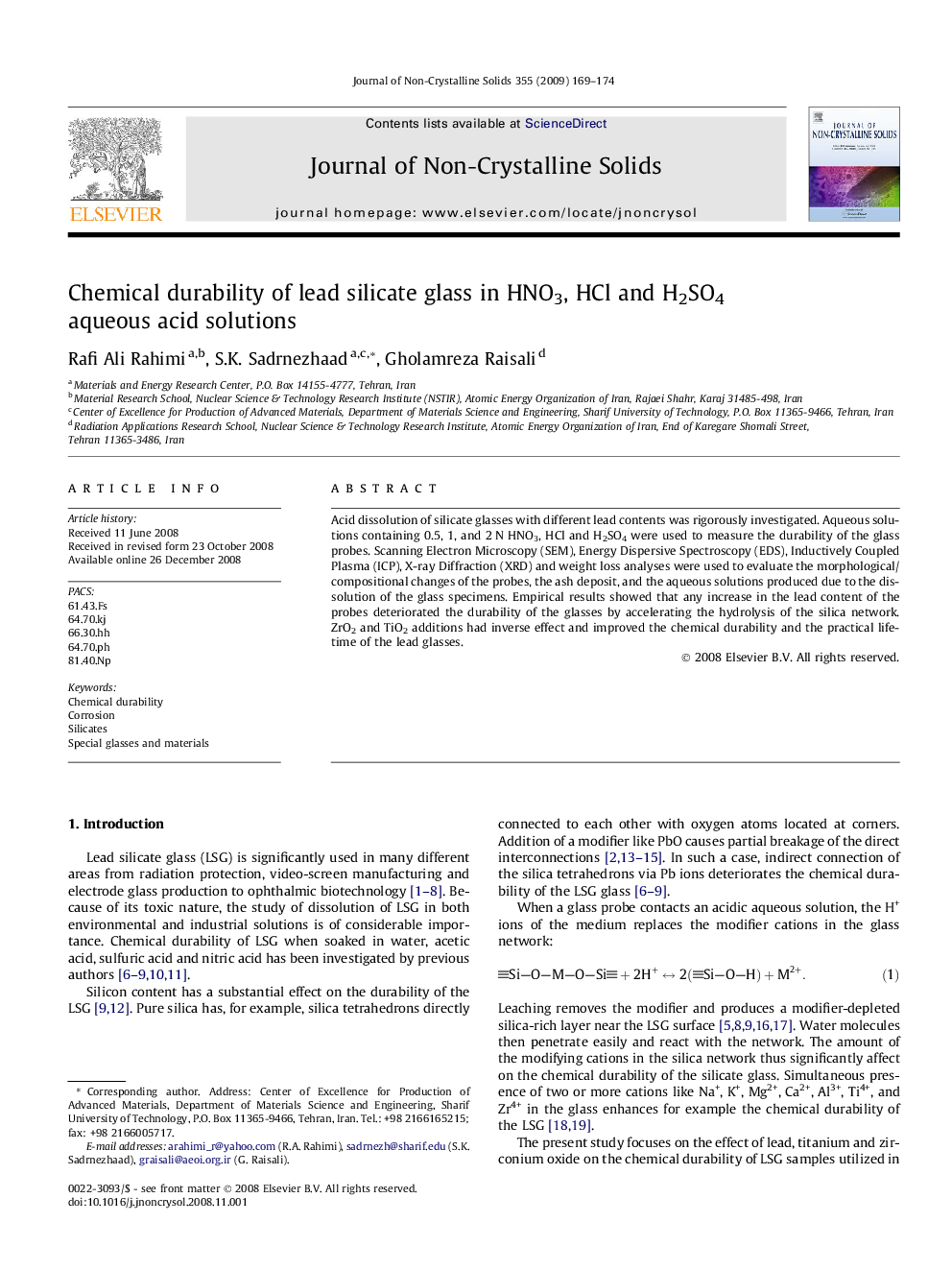| Article ID | Journal | Published Year | Pages | File Type |
|---|---|---|---|---|
| 1483923 | Journal of Non-Crystalline Solids | 2009 | 6 Pages |
Acid dissolution of silicate glasses with different lead contents was rigorously investigated. Aqueous solutions containing 0.5, 1, and 2 N HNO3, HCl and H2SO4 were used to measure the durability of the glass probes. Scanning Electron Microscopy (SEM), Energy Dispersive Spectroscopy (EDS), Inductively Coupled Plasma (ICP), X-ray Diffraction (XRD) and weight loss analyses were used to evaluate the morphological/compositional changes of the probes, the ash deposit, and the aqueous solutions produced due to the dissolution of the glass specimens. Empirical results showed that any increase in the lead content of the probes deteriorated the durability of the glasses by accelerating the hydrolysis of the silica network. ZrO2 and TiO2 additions had inverse effect and improved the chemical durability and the practical life-time of the lead glasses.
